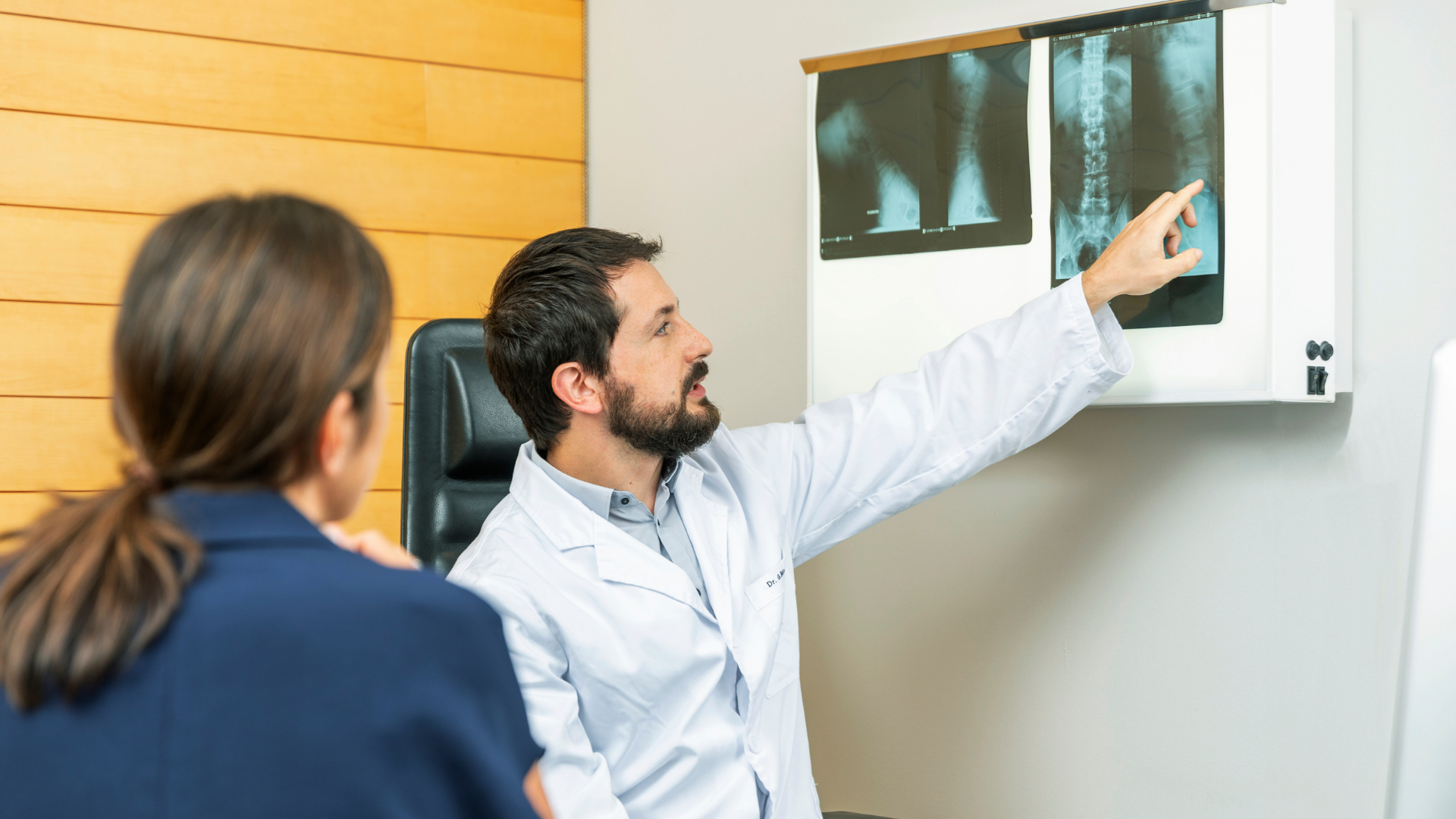A person suffering from lumbar disc disease may find that it significantly restricts their ability to carry out normal daily activities. While this condition does not always require surgery, there are cases where surgery is the only solution. What, exactly, is lumbar disc disease and how do we treat it at Instituto Clavel? Read the following article to find out!
To understand what degenerative lumbar disc disease is, imagine that there are little sponges between the lumbar vertebrae. The sponges are normally moist, which helps them function as shock absorbers, but they can become dehydrated and lose thickness due to the normal aging of the spine. When that happens, the patient begins to lose flexibility, and without the shock absorber effect, their spine is no longer properly cushioned from impacts.
This is painful, and the body reacts to it with muscle spasms in an attempt to stabilize the spine. It is precisely at this point that the term lumbar disc disease applies. In some people, it appears as part of the natural aging process, hence the term "degenerative" is included, but there are cases in which the disc disease is caused by an injury to the back.
In medical terms, lumbar disc disease is defined as follows:
"Intervertebral discs lose height as they lose their water content. This causes the vertebrae to move closer to each other, and causes the nerve openings of the spine to narrow. When this happens, the discs no longer cushion impacts, especially when you're walking, running, or jumping."
When the disc disease occurs as a result of the natural wear and tear due to aging of the spine, a number of localized symptoms may appear, usually in the lower back:
- Persistent and disabling low back pain
- Numbness and tingling in the legs
- Pain that radiates down to the buttocks and thighs
- Discomfort worsens when sitting
- Muscle weakness in the legs and feet
- Pain that is relieved when walking or moving
Get in touch with our specialists

How do we treat lumbar disc disease at Instituto Clavel?
When determining the appropriate treatment for the spine, we make sure to take into account various factors such as the patient's medical condition, the how far advanced the pathology is, and the likelihood it will progress further. Before resorting to surgery, and according to the patient's condition, our first choice is to use more conservative treatment options.
Many of our patients have been able to relieve their symptoms with exercise, medication, and physical therapy. However, when non-surgical treatments do not yield the expected result, our multidisciplinary medical team evaluates whether surgery is the next step, and then chooses the procedure that best suits that patient based on their individual diagnosis:
-
Lumbar fusion: consists of fixing or immobilizing two or more vertebrae with the aim of keeping them together permanently to stabilize the spine and relieve the pain. This is done by placing a stabilizing element, with a graft of bone or artificial material, and this will be the foundation on which the definitive fusion takes place.
Lumbar fusion surgery can be performed using different surgical techniques: fusion by posterior approach with transpedicular screws and rods; anterior fusion by abdominal approach, fusion by lateral approach, or a combination of all three, which is known as a combined approach. At Instituto Clavel we choose the approach that is least invasive for the patient.
Find out more about lumbar fusion surgery
- Lumbar laminectomy: Can be performed as an added procedure to complete the treatment when a lumbar fusion is performed. It is a microsurgical procedure that allows the resection of a part of the posterior spine (lamina) unilaterally (hemilaminectomy) or bilaterally (laminectomy). It is also known as lumbar decompression and its main objective is to release the spinal canal and its internal neural elements (spinal cord, nerves and nerve roots).
If there are no complications after surgery, the patient tends to recover quickly. In most cases, the person stands up and starts walking the day after surgery.
Find out more about lumbar laminectomy
- ADR surgery: in this surgical procedure, the degenerated lumbar disc is replaced by an artificial prosthesis, which fulfills the same functions as a healthy natural disc. At Instituto Clavel we use the technique of anterior approach to the spine for the placement of the artificial disc. With this, we avoid opening the muscles of the back, reduce postoperative pain, and help the patient have a faster recovery.
Learn about the various stages of ADR surgery
Dr. Català explains this technique in depth, as well as describing the cases in which it can be used and what the recovery process is like.
Categories: Spine treatments, Spine pathologies, Back pain
